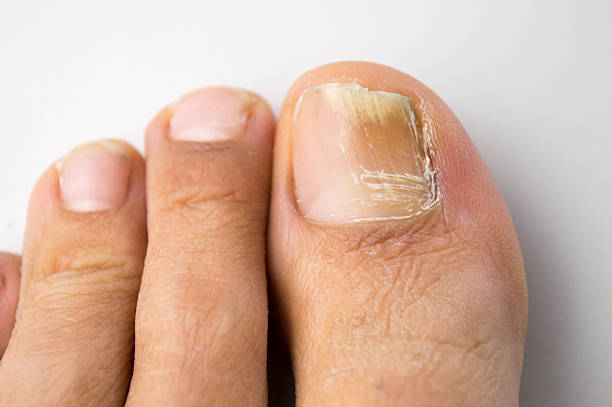Home Remedies for Ingrown Toenails: What Works and What Doesn’t
Ingrown toenails can be a painful and bothersome condition, often occurring when the edge of a toenail grows into the surrounding skin. This issue is not only uncomfortable but can also lead to infections if left untreated. Fortunately, there are various home remedies available that may help alleviate symptoms and promote healthy toenail growth. In this article, we will explore effective treatments and debunk some myths surrounding home remedies for ingrown toenails.
Symptoms of Ingrown Toenails
Before delving into remedies, it’s essential to recognize the symptoms of ingrown toenails. Common signs include:
- Pain and Tenderness: The most noticeable symptom is pain around the toenail, especially when pressure is applied.
- Swelling: The area around the ingrown toenail may become swollen and inflamed.
- Redness: The skin adjacent to the nail often appears red and irritated.
- Infection: In severe cases, pus may develop, indicating an infection.
If you experience any of these symptoms, addressing the issue promptly can prevent further complications.
Home Remedies: What Works
- Soaking the Foot Soaking the affected foot in warm, soapy water for about 15-20 minutes can help reduce pain and inflammation. This practice softens the skin around the nail, making it easier to manipulate the nail if necessary. Adding Epsom salt can enhance the soothing effects, promoting relaxation and reducing swelling.
- Applying Antiseptic Ointment After soaking, applying an antiseptic ointment can prevent infection. This is particularly crucial if there is any break in the skin. Use a clean cotton swab to apply the ointment directly to the affected area, ensuring to cover any exposed nail edge.
- Using Cotton or Dental Floss Gently placing a small piece of cotton or unwaxed dental floss under the ingrown edge of the nail can help lift it and guide it back to its normal growth direction. This method should be performed with care to avoid additional irritation. Change the cotton or floss daily to maintain cleanliness and avoid infection.
- Wearing Proper Footwear Choosing shoes that fit well and provide adequate room for the toes can significantly reduce pressure on the toenails. Shoes that are too tight can exacerbate ingrown toenails, while well-fitted footwear promotes healthy toenail growth
- Turmeric Paste Turmeric is known for its anti-inflammatory and antibacterial properties. Making a paste from turmeric powder and water and applying it to the affected area can help reduce inflammation and fight infection. Cover it with a clean bandage and leave it on for several hours or overnight for the best results.
Home Remedies: What Doesn’t Work
While many home remedies exist, not all of them are effective or safe. Here are a few that should be avoided:
- Trying to Cut the Nail Attempting to cut or dig into the ingrown nail can lead to further irritation, increased pain, and a higher risk of infection. It’s best to avoid this practice and allow the nail to grow out naturally.
- Home Surgery Some people may attempt to perform minor surgeries at home to remove the ingrown nail. This is dangerous and can result in severe complications. Always seek professional help if you believe surgery is necessary.
- Using Hydrogen Peroxide While hydrogen peroxide is commonly used for wound cleaning, it can be too harsh for ingrown toenails and may irritate the skin further. It’s best to stick to gentle antiseptic solutions.
- Duct Tape Method Some people advocate using duct tape to pull the nail out. However, this method can cause more harm than good by trapping moisture and bacteria, leading to infection. It’s advisable to avoid this approach altogether.
Preventing Ingrown Toenails
Preventing ingrown toenails involves a few key practices:
- Trim Nails Properly: Cut toenails straight across rather than rounding the edges, which helps prevent the nail from growing into the skin.
- Wear the Right Shoes: Opt for shoes that fit well and provide ample space for your toes. Avoid high heels and narrow shoes that put pressure on the toes.
- Use Toe Spacers: Toe spacers encourage your toes to align naturally, reducing the likelihood of nails growing into the surrounding skin. By keeping the toes separated, spacers prevent the edges of the toenails from digging into the skin, a common cause of ingrown nails. Toe spacers are now widely available in the market, and the best brand is Correct Toes.
- Maintain Healthy Toenails: Regularly care for your toenails by keeping them clean and dry. Moisture can lead to fungal infections, which can exacerbate toenail problems.
Nutrients like biotin, zinc, and omega-3 fatty acids can contribute to healthy nail growth.
When to See a Doctor
If home remedies fail to alleviate the pain or if signs of infection worsen, it’s crucial to seek professional medical advice. Symptoms that warrant a doctor’s visit include:
- Severe pain that does not improve
- Pus or discharge from the affected area
- Swelling that increases or spreads
- Persistent redness around the nail
A healthcare professional can provide appropriate treatment options, including prescription medications or minor surgical procedures if necessary.
Conclusion
Ingrown toenails can be painful, but many home remedies can help alleviate symptoms and promote healthy toenail growth. Soaking the foot, applying antiseptic ointments, and wearing proper footwear are effective methods to manage this condition. However, some remedies may not be effective and can potentially cause more harm than good. By adopting preventive measures and knowing when to seek medical help, you can maintain healthy toenails and enjoy a pain-free lifestyle.

